#Frederik vii
Explore tagged Tumblr posts
Text
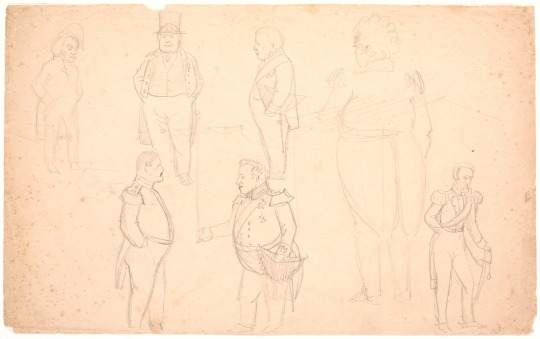
Caricatures of some of the Biggest Danish political figures of the mid-1800s
Figures of Anders Sandøe Ørsted, Frederik VII, Christian VIII, and an old Frederik VI.
P.C. Skovgaard
SMK Open
10 notes
·
View notes
Text




Happy Valentines Day *Royal Edition*
Queen Maud and king Haakon VII of Norway
Queen Astrid and King Leopold III of Belgium
Queen Ingrid and Frederik IX of Denmark
Princess Alexandra of Kent and Sir Angus Ogilvy
#HAPPY VALENTINES DAY#queen maud#queen maud of Norway#maud of wales#king haakon#king haakon VII#king haakon of norway#norwegian royal family#queen astrid#queen astrid of belgium#princess astrid of sweden#king leopold#king leopold III#king leopold of belgium#belgium royal family#queen ingrid#queen ingrid of denmark#princess ingrid of sweden#king frederik#king frederik IX#danish royal family#princess alexandra of kent#princess alexandra#angus ogilvy#sir angus ogilvy#british royal family#royals
32 notes
·
View notes
Text
Royal Autumn 2024 Challenge: Day 13
Favourite photo(s) of royals with their ancestors









#royal autumn 2024 challenge#i know william of orange isn’t WAx’s ancestor but it was the best I could find#prince william#queen victoria#king harald#king olav v#king haakon vii#king willem alexander#william of orange#queen margrethe ii#crown prince christian#king frederik x#grand duke henri#hereditary grand duke guillaume#prince charles of luxembourg#grand duke jean#crown princess victoria#jean baptiste bernadotte#prince albert#princess grace#princess elisabeth#queen elisabeth of belgium#king felipe vi#princess leonor#infanta sofia#king charles iii of spain
13 notes
·
View notes
Text

Brothers in law Albert Edward, Prince of Wales and Crown Prince Frederick of Denmark, January 1869
2 notes
·
View notes
Text
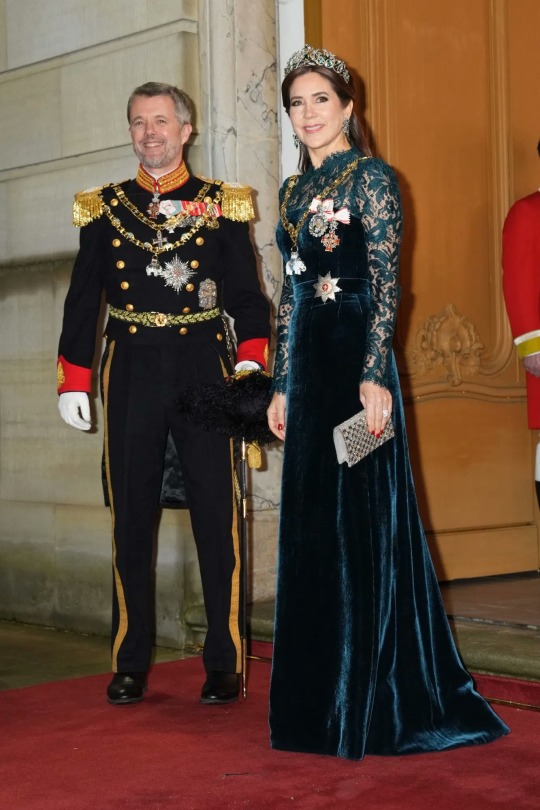
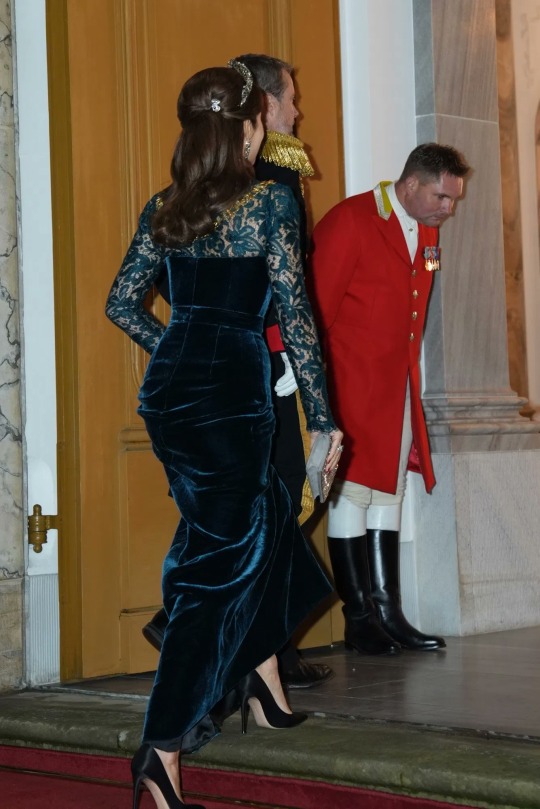
King Frederik and Queen Mary attend the annual New Year's dinner at Christian VII's Palace at Amalienborg | January 1, 2024
74 notes
·
View notes
Text

Cezarevna Maria Fedorovna to her mother, Queen Louise of Denmark:
"Oh! my angelic blessed Mama! Can anyone believe that all this horror is really true? The ways of the Lordare past understanding, and we poor people cannot comprehend that he can permit this most awful of events. Oh, what sorrow and despair, that our beloved Emperor should be torn away from us and even in this dreadful way! No, anyone who has not seen the appalling sight himself can never imagine anything like it! I can still see it before me, night and day! The condition was truly heartrendering! His face and head and upper body were untouched but his legs were completely crushed and torn up to the knees, so that at first I did not understand what I was actually looking at, a bleeding mass with half a boot on the right foot: all that was left of the left was the sole of his foot! Never in my life have I seen anything like it: no it was horrible.
This is how we (Sascha and I) found him, lying on his bed with his eyes still openm and breathing, but unconscious, and less than 3/4 of an hour after our arrival, it was all over: naturally after the enormous loss of blood, all the doctors' efforts were in vain. Poor Uncle Micha (Alexander II's brother Grand Duke Michael Nikolaevuch), who had been with the Emperor at Aunt Cathy's just a few minutes before, had heard the first explosion from her house, immediately rushed out, and arrived at the corner of the street when the second explosion took place, which he clearly saw, and to his question of whether the Emperor was not hurt, he was answered: the Emperor got out of the carriage and walked home unscathed, so he was quite calm and when he cam a bit closer he saw a crowd of soldiers and Cossacks carrying something, and then he saw it was the Emperor they were carrying , half naked since his trousers had been torn off, and the poor legs in that appalling state, which I have already described to you!
You can imagine poor Uncle Mischa's horror and despair at this terrible sight, after he had seen him just 10 minutes before happy and pleased at Aunt Cathy's! Uncle Mischa asked him he he was suffering, after which the poor Emperor could still say in a weak voice: 'quickly home, home! and looked at him with an expression, said Uncle Mischa, that he will never be able to forget! They carried him to a police officer's sled and then drove him as quickly as possible to the palace, but already unconscious!
We found the entire stairs and corridor spattered with the blood that had flowed from him and the wounded Cossacks who carried the Emperor right to his bed, so you can imagine what an awful impression this sight already made on us, we who still only knew that he was wounded.
To see the unfortunate widow's despair was more than heartrendering , so that in an instant, everything that we previously felt against her was gone and only the greatest, most sincere sympathy for her boundless pain remained. I cannot tell you how much I pity her: in such moments, one forgets and forgives everything, and I am certain that if he could see our true feelings for the one he loved most on this earth, he would be pleased with it ...
But for my beloved Sascha, iot was the hardest of all blows! - Imagine to lose one's father in this way, and then the awesome yoke that Our Lord is placing upon him! I am disconsolate and say, as I heard Papa say to you when Frederik VII died: our happiest and lovely time is now past. It was indeed a difficult time for you two then, but it cannot be compared to what we are going through here! My peace and calm are gone, for now I am never again rest assured about Sascha: if I did not have firm faith in God, that he will help us when we do not renounce Him. He himself is touching, in his profound sorrow and despair over his beloved father, but he is calm, trusts firmly in our Lord, and is filled with courage and energy.
May our Lord hear my prayer and protect him and preserve him as he is, in every respect, and bless all his ways and help him to carry out everything with wisdom and crown with success all his good intentions for the country and the people's well-being, happiness and blessing!"
10 notes
·
View notes
Text

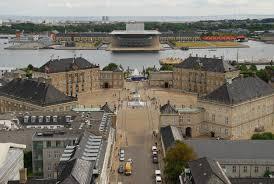

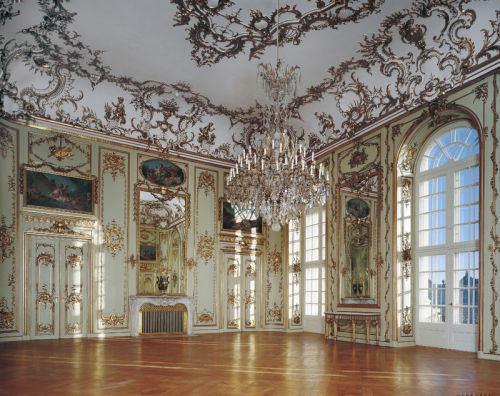

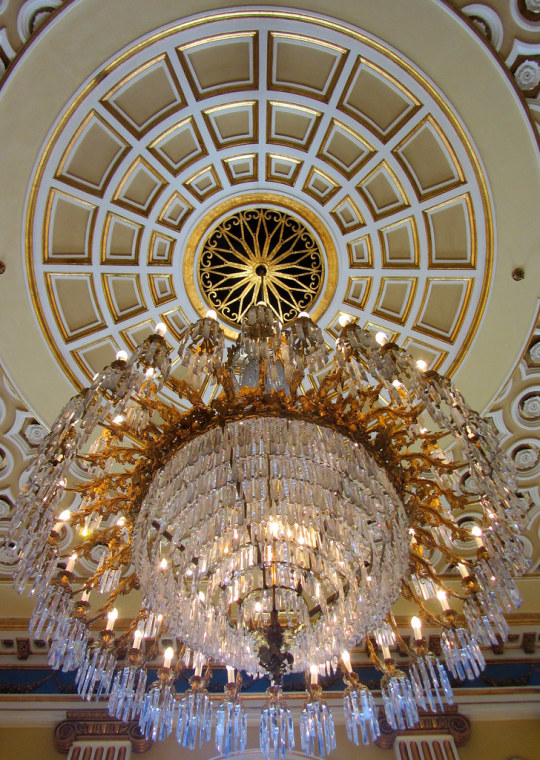



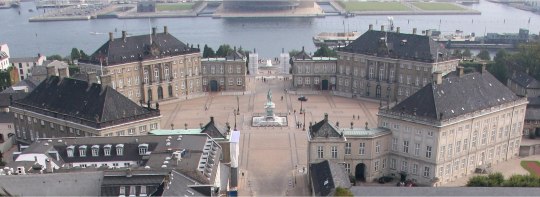
Amalienborg Palace is located in Copenhagen, Denmark. The four palaces were built for four noble families in the mid-1750s. The palaces make up the modern palace of Amalienborg. When Christianborg Palace was destroyed by fire in 1794, Amalienborg Palace was taken by the Royal Family. King Christian VII took Molke’s Palace, Crown Prince Frederik VI took Schack’s Palace, Hereditary Prince Frederik took over Levetzau’s Palace, and Brockdorff’s Palace continued to be an officer school, which began in 1767. Under royal possession, alterations were made to the architecture, with an extra floor inserted between the buildings and corner pavilions, giving Amalienborg a larger appearance. A colonnade was added to link the southerly palaces. The Amalienborg Palaces are identical with corner pavilions and the Place de la Concorde, the octagonal courtyard. It was designed in a light Rococo style with French and German elements. Two of the four buildings are open to the public. The palace museum is located on two floors in the Christian VIII palace. There are also representation rooms with exhibits and the history of the Royal Danish family. The palace has a Gothic Library, The Pompeian Chamber, the Throne Chamber, and the Gala Hall, the largest room. Amalienborg Palace is the winter residence of the Danish royal family, and every day at noon, there is a changing of the royal guards in the courtyard. Amalienborg has been a royal palace for over 200 years.
16 notes
·
View notes
Text
Feira do Livro 2025


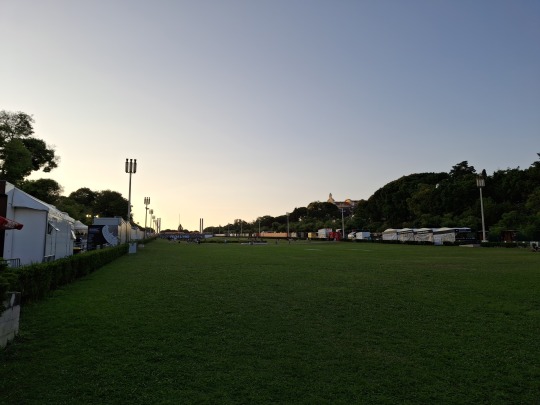

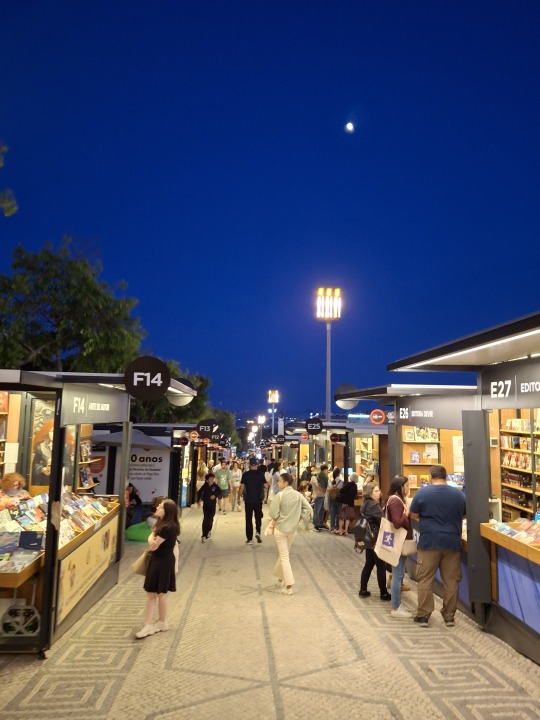

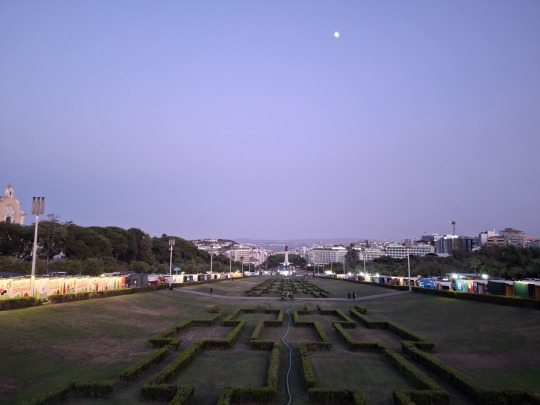
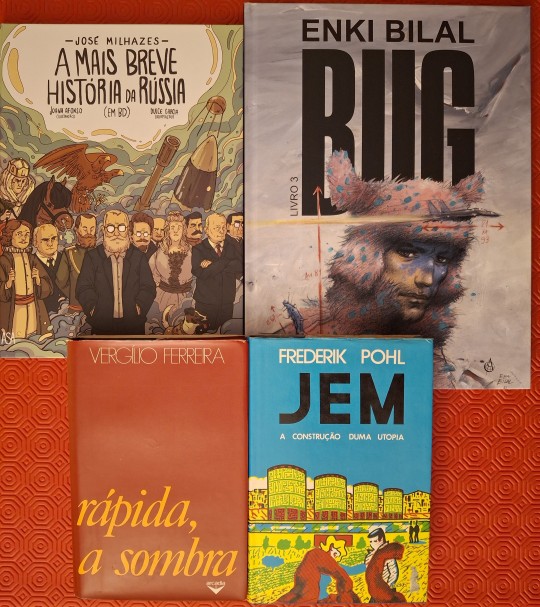
Durante muitos anos não liguei à Feira do Livro. Não sei bem porquê, uma vez que sempre gostei de ler e de livros. Enfim, coisas de juventude palerma; há muito que me reconciliei com a Feira, e há já bons anos que não abdico dos passeios de fim de Primavera ao Parque Eduardo VII para ver livros e gastar mais dinheiro do que devia (e do que tinha planeado antes de sair de casa). Desta primeira visita ficou este espólio: Enki Bilal é obrigatório, claro, e qualquer coisa ilustrada pela Joana Afonso também - este A Mais Breve História da Rússia adapta o livro homónimo de José Milhazes, aqui com texto de Dulce Garcia (as ilustrações estão um espanto, claro). Os outros dois títulos vieram de uma das bancas de alfarrabistas: a edição antiga da Arcádia, em capa dura, de Rápida, a Sombra, de Vergílio Ferreira, e esta edição traduzida de Jem, de Frederik Pohl, na antiga (e de vida curta) colecção de ficção cientifica coordenada por João Barreiros, com esta belíssima capa e contracapa ilustrada de José Eduardo Rocha. Ainda nunca li este Pohl, e conto um dia lê-lo na versão original, mas não resisti a esta versão, que já não se vê por aí todos os dias.
Ainda conto regressar à Feira entretanto para algumas promoções na poesia.
2 notes
·
View notes
Text
With two days left to submit nominees, here is where the list stands:
France:
Jean Lannes
Josephine de Beauharnais
Thérésa Tallien
Jean-Andoche Junot
Joseph Fouché
Charles Maurice de Talleyrand
Joachim Murat
Michel Ney
Jean-Baptiste Bernadotte (Charles XIV of Sweden)
Louis-Francois Lejeune
Pierre Jacques Étienne Cambrinne
Napoleon I
Marshal Louis-Gabriel Suchet
Jacques de Trobriand
Jean de dieu soult.
François-Étienne-Christophe Kellermann
Louis Davout
Pauline Bonaparte, Duchess of Guastalla
Eugène de Beauharnais
Jean-Baptiste Bessières
Antoine-Jean Gros
Jérôme Bonaparte
Andrea Masséna
Antoine Charles Louis de Lasalle
Germaine de Staël
Thomas-Alexandre Dumas
René de Traviere (The Purple Mask)
Claude Victor Perrin
Laurent de Gouvion Saint-Cyr
François Joseph Lefebvre
Major Andre Cotard (Hornblower Series)
Edouard Mortier
Hippolyte Charles
Nicolas Charles Oudinot
Emmanuel de Grouchy
Pierre-Charles Villeneuve
Géraud Duroc
Georges Pontmercy (Les Mis)
Auguste Frédéric Louis Viesse de Marmont
Juliette Récamier
Bon-Adrien Jeannot de Moncey
Louis-Alexandre Berthier
Étienne Jacques-Joseph-Alexandre Macdonald
Jean-Mathieu-Philibert Sérurier
Catherine Dominique de Pérignon
England:
Richard Sharpe (The Sharpe Series)
Tom Pullings (Master and Commander)
Arthur Wellesley, 1st Duke of Wellington
Jonathan Strange (Jonathan Strange & Mr. Norrell)
Captain Jack Aubrey (Aubrey/Maturin books)
Horatio Hornblower (the Hornblower Books)
William Laurence (The Temeraire Series)
Henry Paget, 1st Marquess of Anglesey
Beau Brummell
Emma, Lady Hamilton
Benjamin Bathurst
Horatio Nelson
Admiral Edward Pellew
Sir Philip Bowes Vere Broke
Sidney Smith
Percy Smythe, 6th Viscount Strangford
George IV
Capt. Anthony Trumbull (The Pride and the Passion)
Barbara Childe (An Infamous Army)
Doctor Maturin (Aubrey/Maturin books)
Scotland:
Thomas Cochrane
Colquhoun Grant
Austria:
Klemens von Metternich
Friedrich Bianchi, Duke of Casalanza
Franz I/II
Archduke Karl
Marie Louise
Franz Grillparzer
Wilhelmine von Biron
Poland:
Wincenty Krasiński
Józef Antoni Poniatowski
Józef Zajączek
Maria Walewska
Władysław Franciszek Jabłonowski
Adam Jerzy Czartoryski
Antoni Amilkar Kosiński
Zofia Czartoryska-Zamoyska
Stanislaw Kurcyusz
Russia:
Alexander I Pavlovich
Alexander Andreevich Durov
Prince Andrei (War and Peace)
Pyotr Bagration
Mikhail Miloradovich
Levin August von Bennigsen
Pavel Stroganov
Empress Elizabeth Alexeievna
Karl Wilhelm von Toll
Dmitri Kuruta
Alexander Alexeevich Tuchkov
Barclay de Tolly
Fyodor Grigorevich Gogel
Ekaterina Pavlovna Bagration
Prussia:
Louise von Mecklenburg-Strelitz
Gebard von Blücher
Carl von Clausewitz
Frederick William III
Gerhard von Scharnhorst
Louis Ferdinand of Prussia
Friederike of Mecklenburg-Strelitz
Alexander von Humboldt
Dorothea von Biron
The Netherlands:
Ida St Elme
Wiliam, Prince of Orange
The Papal States:
Pius VII
Portugal:
João Severiano Maciel da Costa
Spain:
Juan Martín Díez
José de Palafox
Inês Bilbatua (Goya's Ghosts)
Haiti:
Alexandre Pétion
Sardinia:
Vittorio Emanuele I
Denmark:
Frederik VI
Sweden:
Gustav IV Adolph
12 notes
·
View notes
Text

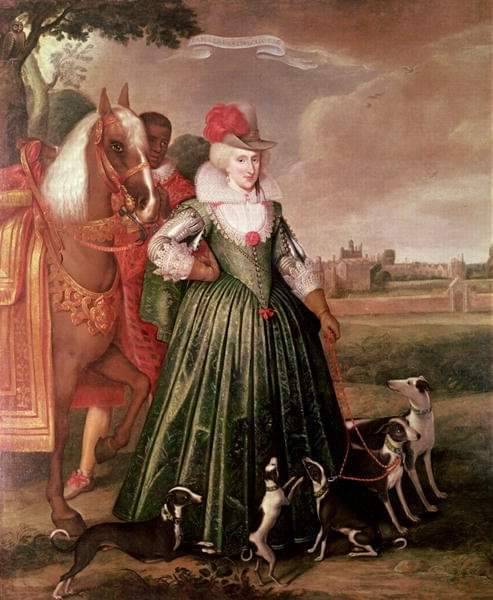
On December 12th 1574, Anne of Denmark, the wife of King James VI, was born.
Anne was the second child, and second girl, of Frederik the Second and his queen, Sophie of Mecklenburg-Schwerin. The couple were initially married by proxy, which means on paper without them being present, and Anne was finding it difficult to make the journey across stormy seas, so James set about fetching her himself and upon reaching and presenting himself to her “in boots and all” and kissed her, in the Scottish fashion!
They were formally married the 23rd of November 1859 in Oslo before returning to Scotland. On the 17th of May she was crowned queen of Scotland. The ceremony lasted seven hours and , Anne’s dress was opened during it and “s "a bonny quantity of oil” was poured upon her breast and arm. James was at first infatuated by his bride, but later the couple often disagreed, though in the early years of their marriage, James seems always to have treated Anne with patience and affection.
Although Anne had been brought up in the Lutheran religion, she converted Roman Catholicism during the 1590s. In Basilikon Doron, written 1597-1598, James described marriage as “the greatest earthly felicitie or miserie, that can come to a man! Nothing changes with marriage through the centuries eh! lol
Despite James’ alleged homosexual tendencies, for which there is no definitive proof, Anne gave birth to their first child, Henry Frederick Stuart on 19 February 1594. She was given no say in the care and upbringing of her son who on James insistence, was placed in the custody of John Erskine, Earl of Mar at Stirling Castle.
Distressed at this situation she mounted a campaign for custody of her son, which James resisted, leading to further friction between the couple. Prince Henry was followed by a daughter, Elizabeth Stuart in 1596, then Margaret in 1598, who died at fourteen months old, a second son, Charles, later Duke of York (and Charles I), was born at Dunfermline in 1600, Charles was at first a sickly child and it was not thought likely that he would survive. Then came Robert, Duke of Kyntyre, born in 1601, who died at the age of four months. She didn’t have it easy in childbiirth, after eventualy gaining custody of Henry she gave birth to a daughter, Mary in 1605 and later her last child, Sophia in 1607, both these children failed to survive to adulthood, Mary died at two years and Sophia at a day old. Mary and Sophia are buried at Westminster Abbey.
The infant mortality rate was high in the seventeenth century, a fact of life that not even royalty could elude. After narrowly surviving the birth and death of her last child, Sophia, in 1607, Anne’s decision to have no more children resulted in widening the gulf between the couple. Queen Anne died aged 44 on 2 March 1619, of a dangerous form of dropsy. An inquest discovered Anne to be "much wasted within, specially her liver”.
James did not attend his wife’s funeral, claiming illness, his symptoms, according to Sir Theodore de Mayerne, included “fainting, sighing, dread, incredible sadness…” Anne was buried in the south aisle of the Henry VII Chapel, Westminster Abbey, on 13 May 1619.
14 notes
·
View notes
Text
From the Archives Masterlist
Updated (21-2-25)
Crown Prince Frederiks (later Frederik vi) Childhood I (November 23)
Frederik VI lying in Repose, 1839 (November 24)
Crown Prince Frederiks (later Frederik vi) Childhood IV (November 26)
Crown Prince Frederiks (later Frederik vi) Childhood III (December 4)
Sitting Figure with a Mask, Framed in a Circle. Draft for a Decoration in the Teahouse in Sorgenfri park. (December 5)
Crown Prince Frederiks (later Frederik vi) Childhood VI (december 9)
The Happy Mediocrity December 15)
Frederik VI (December 27)
Crown Prince Frederiks (later Frederik vi) Childhood V (November 30)
Caricature of a Military Person Riding his Sabre (January 3)
Profile Portrait of the Artists Second Wife, Pregnant and Sitting in an Armchair (January 4)
The Master Thief, Per Mikkelsen (January 5)
Prisoners and Soldiers (January 6)
Count Adam Rzewuski, Polish Envoy to Denmark (January 7)
A Cuddly Couple in Bed (January 10)
Distributing Firewood to the Poor (January 11)
Kongens Nytorv with the Head Guard (January 13)
Frederik VI as a Young Crown Prince (January 14)
Unknown Man in a Red Uniform (January 15)
Portrait of Countess Johanne Caroline Wilhelmine Bille-Brahe (January 16)
Hamlet with his Mother (January 17)
J. F. Clemens (January 18)
Johan Bülow (January 23)
The National Defenders (January 26)
The most horrible night of the bombardment, Copenhagen on 4-5 Sept. 1807 (January 31)
Caroline Amalia (February 2)
The Esplanade at Østerport (February 3)
The Scariest Night in Copenhagen (February 5)
C.W. Eckersberg's Self Portrait (February 9)
Mendel Levin Nathanson's eldest daughters, Bella and Hanna (February 10)
Gertrud Hage, née Heitmann (February 11)
Niels Ryberg with his son Johan Christian and daughter-in-law Engelke, née Falbe (February 12)
Crown Prince Frederik (Later Frederik VI) (February 13)
the Four Temperaments (February 14)
Crown Prince Frederik (later Frederik VI) (February 15)
Frederik VI (February 16)
Adam Oehlenschläger (February 17)
Queen Marie Sophie Frederikke and her daughter Princess Caroline (February 18)
The Most Active of the 3000 Veries (February 19)
Second Christianborg palace, built in 1828, burned 1884. (March 31)
Duchess of Montebello (April 2)
The Back of a Framed Painting (April 6)
The violinist (April 11)
Langebro in moonlight with running figures (April 12)
Pope Leo Xll visits Thorvaldsen's workshops at Piazza Barberini, 18 October 1826 (April 13)
Christian VII unites the ducal with the royal part of Holstein in 1773 (April 14)
Johan Gunder Adler (April 15)
Jonas Collin (April 16)
French Guard kisses a girl, with Napoleon in the Background. (April 17)
Scene of Napoleon and Alexanders Life (April 18)
Johan Sigismund von Møsting (April 19)
Princess Caroline (April 21)
(Crown) Princess Caroline (April 22)
The morning after the Battle of Isted on July 25, 1850 (April 26)
Cecilie Lønborg, married in 1830 to ship inspector Theodor Emil Ludvigsen (April 27)
Portrait of Dr. Carl Otto (May 10)
Portrait of Anne Kirstine Riis, née Andresen (May 11)
Christine Stampe (May 12)
Charles Robert Cocquerell (May 13)
Signe Marie Vilhelmine Jensen (May 14)
2 notes
·
View notes
Text
MARRIAGE OF KING HAAKON VII AND QUEEN MAUD OF NORWAY🥺🤍💍
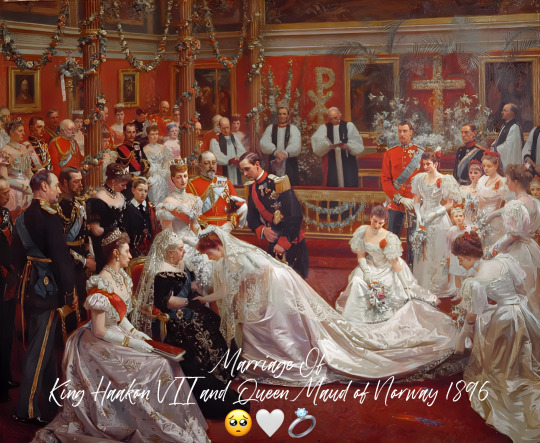
Prince Carl, the second son of then-Crown Prince Frederick of Denmark and Princess Louise of Sweden, was born at the Charlottenlund Palace on August 3, 1872 and was christened Christian Frederik Carl Georg Valdemar Axel. Maud, meanwhile, was the youngest daughter of Albert Edward, Prince of Wales (later King Edward VII) and Princess Alexandra of Denmark. Both Frederick and Alexandra were children of King Christian IX of Denmark.
At a young age, Carl was not expected to become king because he was a second son. So, he built a career in the military, where he served as a naval officer at the Royal Danish Naval Academy in Copenhagen. Maud, meanwhile, was the liveliest of Edward and Alexandra's three daughters. She fell in love with Prince Francis of Teck, the younger brother of her sister-in-law, the future Queen Mary .Francis and Maud exchanged several letters, however, as time passed, it became clear that the love was one-sided as Francis had no interest in Maud.🥲💔
As cousins, Maud and Carl often met, especially during family gatherings. Rumours eventually circulated within the family that the two might get married. Carl proposed during a reunion at Fredensborg Castle and Maud accepted. Their engagement was announced on October 29, 1895. Princess Alexandra was initially hesitant of the engagement because Maud was 3 years older than Carl, She only relented when she realized that Carl would prove to be the right husband for her sea-loving daughter.🌊🤍
The engagement delighted Queen Victoria (Maud's grandmother). According to Queen Victoria's Maid of Honour, news of their engagement “…caused much excitement at Balmoral…and has been the cause of much telegraphing…The Queen is delighted and healths were drunk at dinner.”
The wedding was set on July 22, 1896. The wedding was almost delayed after Prince Henry of Battenberg's untimely death, but it was finally decided that the wedding should go on as scheduled and that Princess Beatrice (Maud's aunt and Prince Henry's wife) and her children would not attend. European royals converged in London for this wedding. Members of both the British and Danish royal families were present, as well as their Greek, German, Russian, and Swedish relatives. The bride wore a simple dress fashioned by Miss Rosalie Whyte of the Royal Female School of Art. It had a long train and was made of pure white English satin which was woven in Spitalfields, a section of London known for its weaving. She wore the Princess of Wales' wedding veil and instead of a tiara, she adored her hair with flowers.
Queen Victoria recorded in her Journal: ‘After the Benediction, Maud came forward to her parents & then to me & I kissed both her & the Bridegroom’.
the famous royal painter LAURITS REGNER TUXEN painted the wedding using the photos taken at the wedding! Queen Victoria gave the painting as a present to Maud's parents, the Prince and Princess of Wales.🥺❤️🩹
25 notes
·
View notes
Text
Ok, so instead of making actual guesses at Frederik's motto (which is probably gonna be something idiotic like... Hvad kæmper vi for? Danmark! 🤾🏻♂️), I'm just gonna list the ones I would've advised him to go for:
Folkets kærlighed er min berømmelse (The love of the People is my reward) – because Christian VII's motto is still the best motto to have ever mottoed
Med folket for Danmark (With the People for Denmark) – it's straightforward but elegant and it also holds the sentimental value of being a reworked version of Frederik IX's motto.
For Danmark i tiden (For Denmark with the Times) – I've seen people suggest that he might emulate the NRF's tradition and use All for Denmark because... it sounds like some sports saying 🙃 I don't but that. I think some version of CG's motto is much more likely. For all that is true ghastly about CG, his motto is really neat and befitting of a 21st century monarch.
Danmarks styrke, min styrke (Denmark's strength, my strength) – again, simple but neat – reiterates his dedication to the country and echoes previous mottos.
8 notes
·
View notes
Text
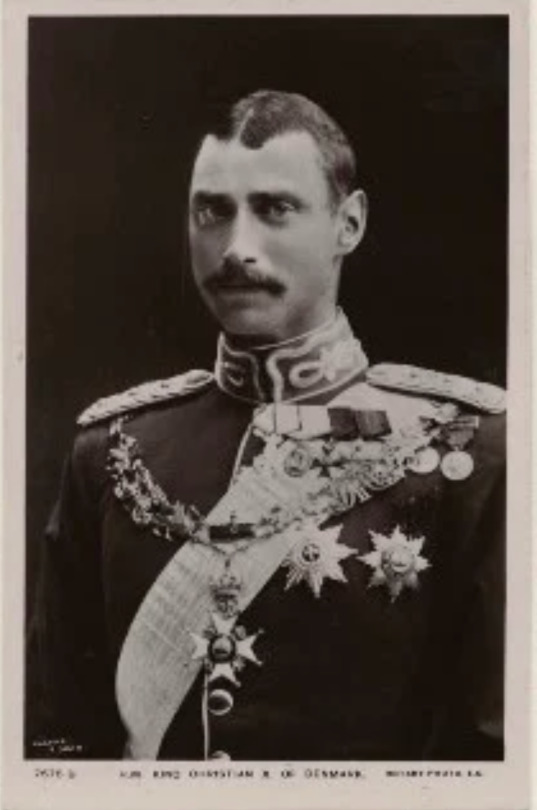
King Christian X (Christian Carl Frederik Albert Alexander Vilhelm; 1870 – 1947); King of Denmark from 1912 to his death in 1947
I want to place this remarkable individual within the context of the many royal families we discuss in this blog. He had quite an eventful and successful reign, including transitioning his country into a constitutional monarchy, but this post is just about (some) of his relatives.
He was a grandson of Christian IX and the son of the future Frederick VIII. His brother was the future Hakoon VII of Norway. His paternal aunts were Dagmar (Empress Maria Feodorovna) and Queen Alexandra of the United Kingdom. King George V, Queen Maud, and Tsar Nicholas II were his first cousins. Christian X's mother was Lovisa of Sweden.
He was raised strictly in a palace part of the Amelienborg Palace complex. He received a military education and studied at the Officers Academy.
Christian initially loved Princess Marguerite of Orleans, but his feelings were not returned, so he married Princess Alexandrine of Mecklenburg Schwerin. Alexandrine's maternal line was Romanov...her mother, Anastasia, was the daughter of Nicholas I's younger son, Grand Duke Mikhail Nikolaievich. They had two sons: Prince Frederick (1899–1972), later King Frederick IX of Denmark and Prince Knud (1900–1976)
In case you are wondering, he was 6 feet 7 inches tall.
What a dynasty Christian IX and Queen Louise gave to the world!
#European history#Christian IX#Christian X#Louise of Hesse-Kessel#Grand Duchess Anastasia Mikhailovna#Frederick VIII#Empress Maria Feodorovna#Queen Alexandra of the United Kingdom#George V#Nicholas II#King Hakoon VII#Queen Maud#Lovisa of Sweeden#Alexandrine of Mecklenburg Schwerin
16 notes
·
View notes
Text
Royal Family Residences: A Series
In This Episode: Frederik VIII's Palace at Amalienborg
Frederik VIII's Palace is the current residence of King Frederik and Queen Mary of Denmark, and their four children. It is one of the four palaces that make up the Amalienborg complex, all of which have identical Classical façades with Rococo interiors, laid around an octagonal courtyard.

History
Frederik VIII's Palace, also known as Brockdorff's Palace, is the northeastern palace. It has been the home of King Frederik X and Queen Mary since their marriage.
It was originally built for Count Joachim Brockdorff in the 1750s. Brockdorff died in 1763, and Lord High Steward Adam Gottlob Moltke acquired the palace. Moltke sold it two years later to King Frederick V.
From 1767 it housed the Royal Danish Military Academy, also known as the Army Cadet Academy (Landkadetakademi). In 1788 naval cadets replaced the army cadets until the academy moved to another location in 1827.
The following year the palace was prepared to house King Christian VIII's son, Frederik VII, who ascended the throne in 1848, and his bride, Princess Vilhelmine. Architect Jørgen Hansen Koch successfully and thoroughly refurbished the palace in French Empire style in 1827–28.
After the marriage was dissolved in 1837, various members of the royal family lived in the palace. In 1869, it became the home of Frederik VIII. In 1934, it became the home of King Frederik IX and Queen Ingrid. The latter lived there until her death in 2000. From 2006 to 2010 the palace underwent major renovation to accommodate the then Crown Prince couple.
The renovations cost 220m Danish Krone and lasted five years. The result was a mix of contemporary artwork with traditional, classic architecture.
Interior Shots

main interior staircase

secondary staircase


Queen Mary's office

the green room


meeting room

dining room



vestibule reception room

the tapestry room

service kitchen


artwork

yellow vestibule

private meeting room

formal meeting room





random lol
#starting off with the most controversial one#also probably the easiest one to find pics of#royal residences deep dive#drf
44 notes
·
View notes
Text
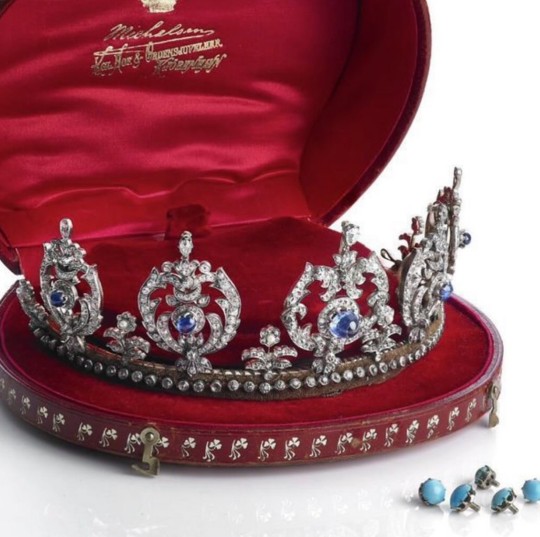
~ "A diamond and sapphire tiara, 1890s, with a Royal provenance, each foliate element centred by a cabochon sapphire, flanked by a floral motif, set with old cut diamonds, gold and silver mounts. The cabochon sapphires can be swapped out for turquoise cabochons. The tiara belonged to Princess Thyra, daughter of King Frederik VIII and Queen Lovisa of Denmark. -Her siblings were King Christian X of Denmark, King Haakon VII of Norway, and Princess Ingeborg of Sweden, among others- Princess Thyra never married and left the tiara to her niece, Princess Caroline-Mathilde of Denmark, who chose to marry her first cousin, Prince Knud, the younger brother of King Frederik IX Their only child was Princess Elisabeth, receiving the tiara from her mother in the 1960s. She was a first cousin of Queen Margarethe II and wore it quite often at state functions and in 2004 at the wedding of crown prince Frederik and Mary." ~
3 notes
·
View notes